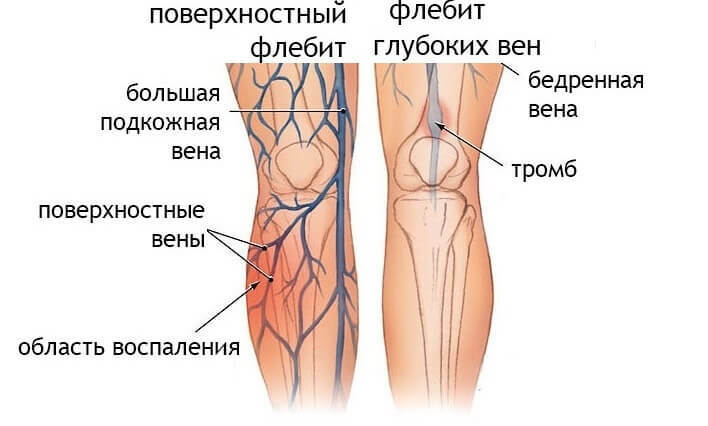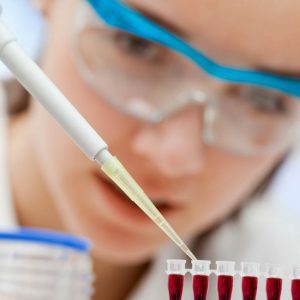Blood test for lipids
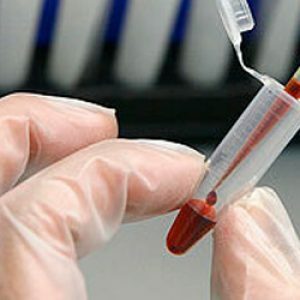 A lipidogram is a biochemical blood test that allows you to objectively assess abnormalities in the fat metabolism.Even minor deviations from the norm when analyzing blood for lipids can mean that a person has a high probability of developing various diseases - blood vessels, liver, gall bladder.In addition, a regular blood test for lipids allows doctors to predict the development of a specific pathology and to take timely measures for prevention or treatment.
A lipidogram is a biochemical blood test that allows you to objectively assess abnormalities in the fat metabolism.Even minor deviations from the norm when analyzing blood for lipids can mean that a person has a high probability of developing various diseases - blood vessels, liver, gall bladder.In addition, a regular blood test for lipids allows doctors to predict the development of a specific pathology and to take timely measures for prevention or treatment.
When to conduct a blood test for lipids
Of course, every person concerned with their own health with attention can at any time turn to a medical facility andPass the type of examination in question. But there are specific indications for the lipidogram:
- jaundice extrahepatic;
- hypothyroidism;
- myocardial infarction;
- nephrotic syndrome;
- atherosclerosis;
- type 1 and type 2 diabetes mellitus;
- angina pectoris;
- pancreatitis proceeding in chronic form;
- Renal failure, occurring in chronic form;
- glomerulonephritis;
- pancreatic cancer;
- cirrhosis of the liver;
- gout;
- sepsis;
- alcoholic intoxication of chronic course;
- continued use of oral contraceptives;
- hyperthyroidism;
- megaloblastic anemia;
- anorexia;
- obesity;
- is a burn disease;
- myeloma disease.
View full list »
Rules for the procedure
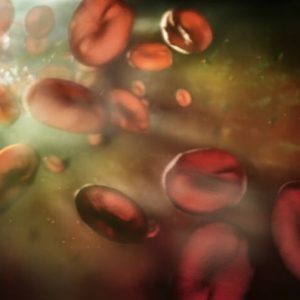 Patients should be aware that the blood sampling for the examination in question is carried out on an empty stomach in the morning, approximately within 8-11 hours. On the eve of the last meal should be held no later than 8 hours before the scheduled time of delivery of tests.Doctors recommend not to drink alcohol and quit smoking several days before the scheduled day of the survey.
Patients should be aware that the blood sampling for the examination in question is carried out on an empty stomach in the morning, approximately within 8-11 hours. On the eve of the last meal should be held no later than 8 hours before the scheduled time of delivery of tests.Doctors recommend not to drink alcohol and quit smoking several days before the scheduled day of the survey.
Decoding of the lipidogram
Within the framework of this survey, the level of cholesterol, high-density lipoproteins, low-density lipoproteins, very low-density lipoproteins, triglycerides and the coefficient of atherogenicity are determined.
Cholesterol
This is the basic lipid that enters the body with products of animal origin.The quantitative index of this lipid in the blood is an integral marker of fat metabolism.The lowest level of cholesterol is determined only in newborns, but with age, its level inevitably grows and reaches its maximum for the elderly.It is noteworthy that in men even in old age the level of cholesterol in the blood is lower than that of women.
Normal values of cholesterol in the study of blood for lipids: 3, 2 - 5, 6 mmol / l.
Analysis of
Elevated levels of cholesterol may indicate the following pathologies:
- family disbetalapoproteinemia;
- familial hypercholesterolemia;
- polygenic hypercholesterolemia;
- combined hyperlipidemia.
The above pathologies refer to primary hyperlipidemia, but high cholesterol may also indicate the presence of secondary hyperlipidemia:
- alcoholic intoxication of chronic course;
- ischemic heart disease;
- chronic renal failure;
- long-term adherence to a diet rich in fats and carbohydrates;
- malignant neoplasms in the pancreas;
- myocardial infarction;
- pancreatitis in chronic form;
- obesity;
- atherosclerosis;
- pregnancy;
- glomerulonephritis;
- primary cirrhosis of the liver of the biliary form;
- nephrotic syndrome;
- type 1 and type 2 diabetes mellitus;Jaundice extrahepatic type;
- deficiency of growth hormone;
- gout.
View full list »
If the cholesterol level in the blood is clearly lowered, then this may indicate:
- starvation;
- megaloblastic anemia;
- sepsis;
- pulmonary tuberculosis;
- cachexia;
- hyperthyroidism;
- chronic obstructive pulmonary disease;
- Tangier disease;
- thalassemia;
- hepatocarcinoma;
- liver cirrhosis in the thermal stage;
- severe infectious diseases.
View full list »
High-density lipoproteins( HDL)
These lipids are the only ones that do not participate in the formation of atherosclerotic plaques in the vessels.In women, the level of high-density lipoproteins is always higher than in men.
The normal HDL cholesterol is 0, 9 mmol / l.
Decoding results
Increasing the level of high-density lipoproteins indicates:
- Cushing's syndrome;
- obstructive jaundice;
- chronic renal failure;
- hypothyroidism;
- on obesity;
- nephrotic syndrome;
- pregnancy;
- diabetes mellitus of the first and second type.
In addition, a high level of the lipid in the blood can be detected against the background of a diet rich in cholesterol.
The decrease in the level of high-density lipoproteins is revealed against the background:
-
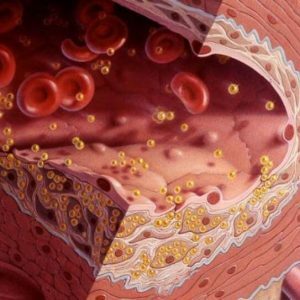 Tobacco;
Tobacco; - administration of certain medicines( danazol, diuretics, progestins and others);
- nephrotic syndrome;
- of the first and second type of diabetes mellitus;
- chronic liver diseases;
- atherosclerosis.
Low-density lipoproteins( LDL)
Lipoproteins considered to be the most atherogenic lipids.They transport cholesterol to the vascular system and already there form atherosclerotic plaques.
Normal LDL - 1, 71 - 3, 5 mmol / l.
Decoding of the results of the analysis
Increased level of low-density lipoprotein levels means the development of the following pathologies in the patient's body:
- obstructive jaundice;
- anorexia;
- nephrotic syndrome;
- Cushing's syndrome;
- type 1 and type 2 diabetes mellitus;
- obesity;
- renal failure in chronic form of the current;
- hypothyroidism.
In addition, a high level of LDL can be on the background of pregnancy or a diet rich in cholesterol.The same results will give blood tests for lipids with long-term use of certain medications - diuretics, oral contraceptives, glucocorticosteroids, androgens.
A reduced level of low-density lipoproteins indicates:
- Reye syndrome;
- chronic anemia;
- Tangier disease;
- myeloma;
- arthritis of different etiology.
Decrease in the level of lipids under consideration can occur against a background of eating disorders( foods rich in polyunsaturated fatty acids consume), acute stress disorder.
Very low density lipoproteins( VLDL)
These are highly atherogenic lipids, which are produced by the intestine and liver.
The normal indices of VLDL are 0, 26-1.4 mmol / l.
Elevated levels of very low density lipoproteins are observed with:
- obesity;
- systemic lupus erythematosus;
- nephrotic syndrome;
- pituitary insufficiency;
- diabetes mellitus;
- hypothyroidism;
- of the Niman-Pick disease;
- chronic alcohol intoxication.
In addition, the type of lipids in question can be detected during pregnancy( on the 3rd trimester).
Triglycerides
So-called neutral fats, which circulate in the blood plasma in the form of lipoproteins.Produced by the liver, intestines and fat cells proper, they also enter the body together with food.It is triglycerides that are the main energy source of cells.
Normal indices of triglycerides - 0, 41 - 1, 8 mmol / l.
Decoding of the results of the analysis
A high level of lipids under consideration can be detected against the background of primary hyperlipidemia:
- deficiency of LHAT( lecithin cholesterol cyclic transferase);
- familial hypertriglyceridemia;
- simple hypertriglyceridemia;
- chylomicronemia syndrome;
- complex hyperlipidemia.
Triglycerides may be raised against:
- atherosclerosis;
- ischemic heart disease;
- hypertension;
- of viral hepatitis;
- nephrotic syndrome;
- thalassemia;
- pancreatitis, flowing in acute or chronic form;
- obturation of the biliary tract;
- obesity;
- of cirrhosis;
- administration of medications( eg, diuretics, oral contraceptives and others);
- hypothyroidism;
- glycogenases;
- pregnancy.
View full list »
Reduction of the level of the lipid in the blood will be present against the background:
-
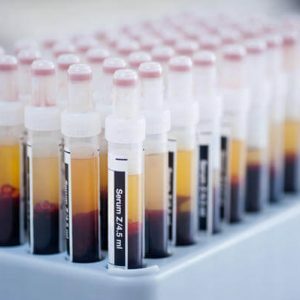 of the syndrome of intestinal absorption;
of the syndrome of intestinal absorption; - hyperthyroidism;
- chronic obstructive pulmonary disease;
- of hyperparathyroidism;
- of intestinal lymphangiectasia;
- malnutrition;
- for hypolipoproteinemia;
- administration of certain medications( eg, vitamin C, cholestyramine, heparin and others).
Atherogenicity coefficient
This ratio of atherogenic fractions of low and very low density lipoproteins to the antiatherogenic fraction of high density lipoproteins.It is the indicator in question when carrying out a blood lipid test allows you to "visually" assess the likelihood of atherosclerotic plaque formation.
The normal indices of the atherogenicity coefficient are 1. 5 - 3. 0.
Analysis of the results of the analysis:
- low probability of formation of atherosclerotic plaques - atherogenic coefficient less than 3, 0;
- moderate risk of atherosclerotic plaque formation - the coefficient of atherogenicity is 3, - 4, 0;
- high risk of formation of atherosclerotic plaques - the coefficient of atherogenicity is more than 4, 0.
When the doctor necessarily prescribes a blood test for lipids
If the patient has already diagnosed some diseases, the doctor always prescribes a blood test for lipids .These pathologies include:
- Gout - the cholesterol level will be significantly increased.
- Myocardial infarction - increased levels of both cholesterol and triglycerides.
- Obliterating atherosclerosis of the lower limbs - increased level of triglycerides and cholesterol, lowered level of high-density lipoproteins.
- Arthritis - the level of low density lipoproteins is significantly reduced.
- Hyperthyroidism - the level of cholesterol, low-density lipoproteins and triglycerides is lowered.
- Type 1 and type 2 diabetes mellitus is an increase in the level of low density lipoproteins, an increase in the level of triglycerides, cholesterol and very low density lipoproteins.
- Chronic heart failure - severely lowered cholesterol.
- Hyperthyroidism - lowered the level of triglycerides, cholesterol and low-density lipoproteins.
- Nephrotic syndrome - all lipids in the blood are elevated.
- Chronic pancreatitis - elevated levels of very low density lipoproteins, cholesterol and triglycerides.
- Acute glomerulonephritis - increased cholesterol levels.
- Reye syndrome - lowered level of low density lipoproteins.
- Anorexia nervosa - lowered cholesterol level, increased level of high-density lipoproteins.
- Hypothyroidism - increased levels of high and low density lipoproteins, cholesterol.
- Primary hyperparathyroidism - lowered triglyceride levels.
- Chronic renal failure is an increase in cholesterol, a decrease( in some cases, an increase) in the level of high-density lipoproteins.
- Cirrhosis of the liver - with a biliary type of pathology, a high level of cholesterol will be detected, with classical cirrhosis - an increase in the level of triglycerides, in the thermal stage of cirrhosis - lowering the level of cholesterol.
- Chronic glomerulonephritis - increased cholesterol levels.
- Obesity - increased levels of cholesterol, triglycerides, low, high and very low density lipoproteins.
- Burn disease - the cholesterol level can be either increased or decreased, depending on the severity of the course of the disease.
- Hypertension - increased level of triglycerides.
- Systemic lupus erythematosus - elevated levels of very low density lipoproteins.
- Hepatitis B - increased level of triglycerides.
The blood test for lipids is considered to be a sufficiently informative study that allows not only to confirm the alleged diagnosis, but also to prevent the development of many pathologies.
Tsygankova Yana Aleksandrovna, medical reviewer, therapeutist of the highest qualification category

